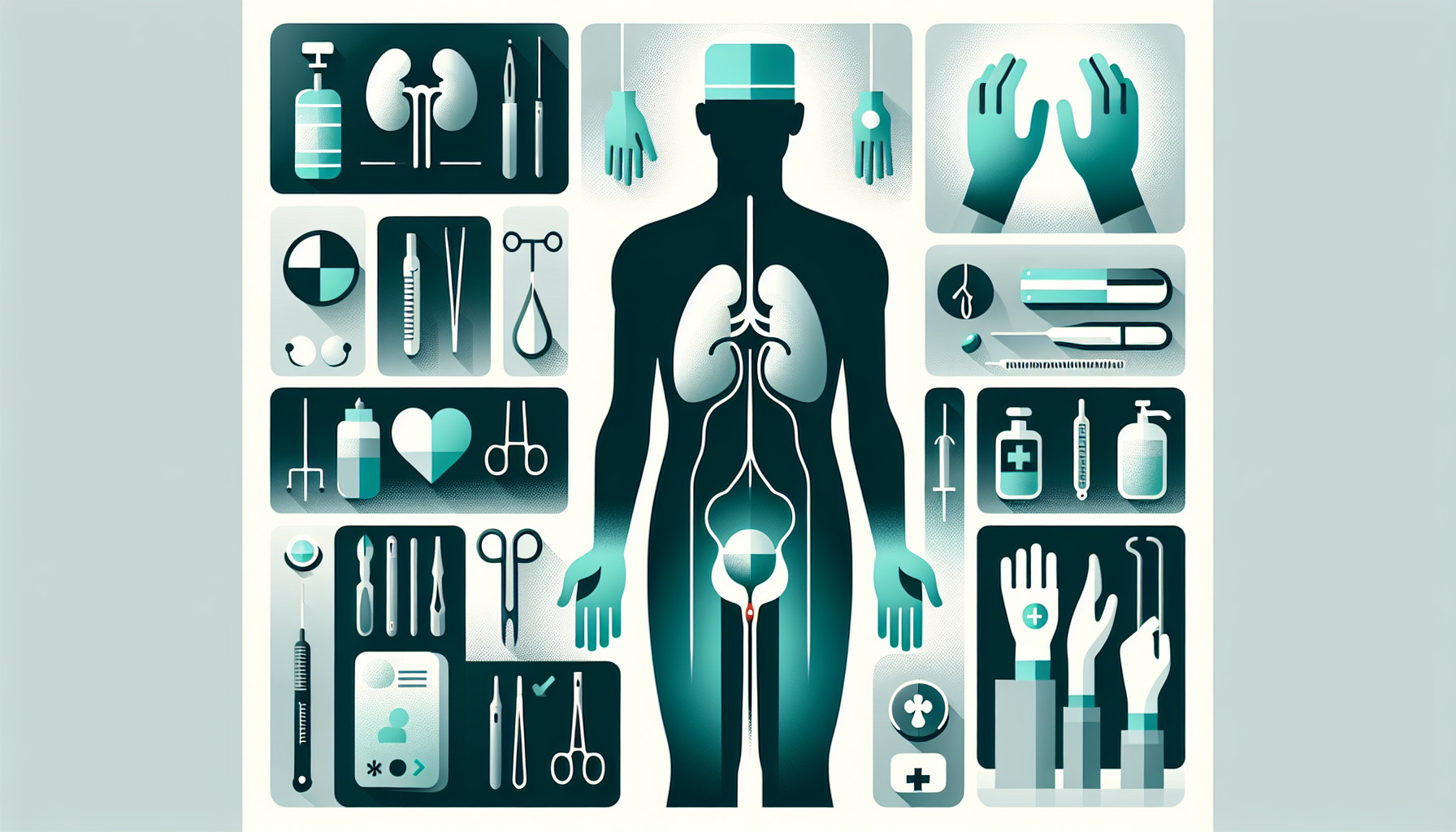Our Summary
This research paper talks about robotic donor nephrectomy (RDN), a process used to remove a kidney from a living donor for transplant. RDN can be done using two different methods: a multi-port (MP) approach or a single-port (SP) approach. While both methods are quite similar, they do have some differences in terms of how the patient is prepared for the operation, the operation itself, and the aftercare.
The paper goes on to discuss the specific steps followed in both the MP and SP approaches, and how they might affect things during the operation. The authors also share their recent findings comparing the success rates of the MP and SP approaches with traditional laparoscopic techniques, as well as comparing the MP and SP approaches with each other.
The authors conclude that both the MP and SP methods are safe and effective options for removing a kidney from a living donor. They found that these methods have similar success rates to traditional laparoscopic techniques and to each other. However, they did note that the SP method might have some advantages in certain steps of the procedure.
The authors state that more research is needed to confirm their findings and to find out if there are any other benefits or drawbacks to the SP and MP methods.
FAQs
- What is a robotic donor nephrectomy (RDN)?
- What are the differences between the multi-port (MP) and single-port (SP) approaches to RDN?
- How do the success rates of the MP and SP methods compare to traditional laparoscopic techniques?
Doctor’s Tip
In terms of advice for a patient undergoing nephrectomy, a doctor might recommend:
- Following all pre-operative instructions given by the medical team, such as fasting before the surgery and stopping certain medications.
- Maintaining a healthy lifestyle before the surgery, including regular exercise and a balanced diet to optimize recovery.
- Discussing any concerns or questions with the medical team before the surgery to ensure a clear understanding of the procedure and expectations.
- Following post-operative care instructions carefully, including wound care, medication management, and follow-up appointments.
- Being mindful of any potential complications or signs of infection after the surgery, and contacting the medical team if any issues arise.
Suitable For
Patients who are typically recommended for nephrectomy include those with kidney cancer, kidney stones, kidney infections, kidney cysts, polycystic kidney disease, kidney trauma, and other kidney conditions that are not responding to other treatments. Additionally, nephrectomy may be recommended for living kidney donors who are willing to donate one of their kidneys for transplant purposes.
Timeline
Overall, the timeline of what a patient experiences before and after nephrectomy includes:
Before nephrectomy:
- Patient consultation and evaluation to determine if nephrectomy is necessary
- Pre-operative testing and preparation, including blood tests, imaging studies, and medication adjustments
- Education on the procedure, risks, and post-operative care
- Consent for surgery
During nephrectomy:
- Anesthesia is administered
- The kidney is removed using either the multi-port or single-port approach
- Monitoring of vital signs and anesthesia throughout the procedure
- Wound closure and recovery from anesthesia
After nephrectomy:
- Recovery in the hospital, typically for a few days
- Pain management and monitoring for complications
- Gradual return to normal activities, with restrictions on heavy lifting and strenuous exercise
- Follow-up appointments with the surgical team to monitor healing and kidney function
Overall, the goal of nephrectomy is to remove the kidney safely while preserving the patient’s overall health and quality of life. With advancements in surgical techniques like robotic donor nephrectomy, patients can experience less pain, shorter hospital stays, and faster recovery times compared to traditional open surgery methods.
What to Ask Your Doctor
Some questions a patient should ask their doctor about nephrectomy include:
- What is the reason for recommending a nephrectomy?
- What are the risks and potential complications associated with the procedure?
- What are the differences between the multi-port and single-port approaches to nephrectomy?
- How will I be prepared for the operation, and what is the recovery process like for each approach?
- What are the success rates of the multi-port and single-port approaches compared to traditional laparoscopic techniques?
- Are there any specific advantages or drawbacks to choosing the single-port approach over the multi-port approach, or vice versa?
- Are there any long-term effects or considerations I should be aware of after undergoing a nephrectomy?
- What is the expected outcome of the procedure in terms of kidney function and overall health?
- Are there any alternative treatment options to consider before undergoing a nephrectomy?
- How often will I need follow-up appointments or monitoring after the procedure?
Reference
Authors: Chin CP, Levy M, Awan M, Palese M. Journal: J Endourol. 2025 Mar;39(S1):S66-S71. doi: 10.1089/end.2024.0421. PMID: 40100837
